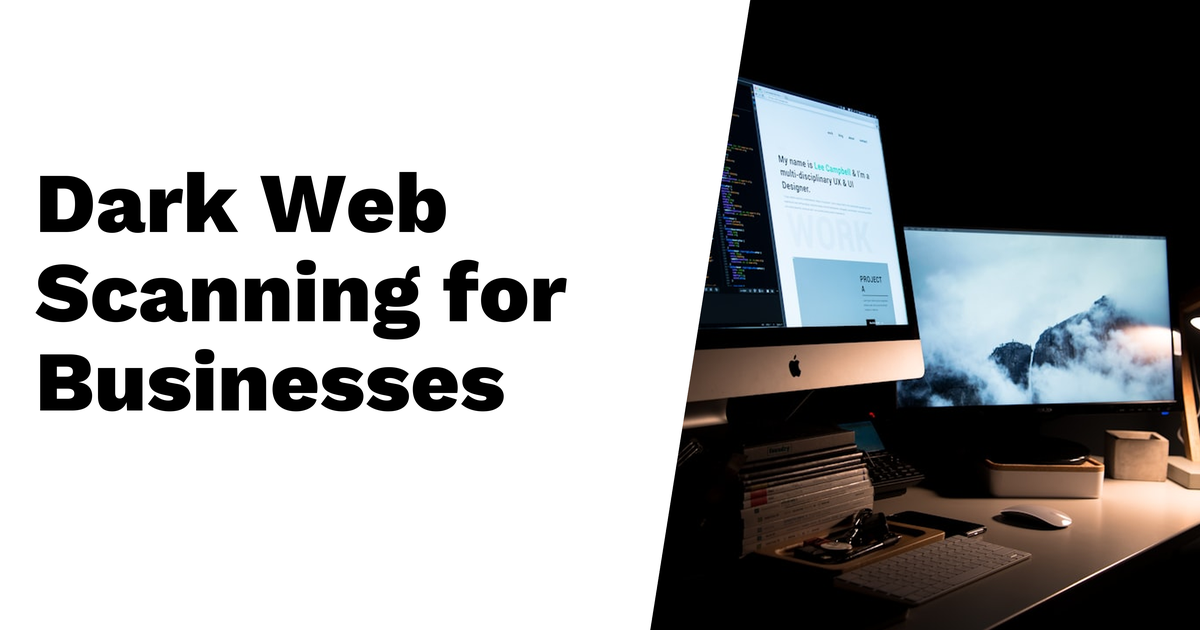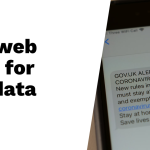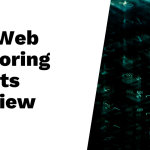Dark web monitoring is an essential service for small businesses, focusing on searching hidden online platforms for compromised data. This proactive approach helps detect stolen credentials and sensitive information that cybercriminals might exploit. With the rising costs of cybercrime projected to hit $10.5 trillion by 2025, early detection can prevent significant data breaches and enhance security measures. Dark web scanning services continuously track identifiers, such as company domain names and employee email addresses, sending alerts when threats emerge. While cost and complexity may present challenges for small businesses, implementing effective monitoring can safeguard their reputation and ensure compliance with data protection regulations.
Table of Contents
- What is Dark Web Monitoring?
- Types of Information Monitored
- Mechanisms of Dark Web Scanning Services
- Key Benefits for Small Businesses
- Challenges and Considerations
- Best Practices for Implementation
- Top Dark Web Monitoring Solutions
- Real-World Impact of Dark Web Threats
- Frequently Asked Questions
1. What is Dark Web Monitoring?
Dark web monitoring is the ongoing process of scanning hidden parts of the internet for stolen or compromised information. This practice is crucial for both personal and business security, as it helps detect data that cybercriminals may be trying to sell or exploit. By utilizing a combination of automated tools and human analysis, dark web monitoring can track specific indicators, such as email addresses and passwords, to identify potential breaches. When a business’s information is found on the dark web, alerts are generated, allowing them to take immediate action to protect their assets. This proactive approach aims to minimize the risks of identity theft and fraud, while also extending to monitoring social media for compromised accounts. As part of a broader cybersecurity strategy, dark web monitoring requires regular updates and adjustments to keep pace with the ever-evolving landscape of cyber threats. Many companies choose various services to enhance their monitoring capabilities and ensure that they remain vigilant against potential risks.
2. Types of Information Monitored

Dark web scanning services focus on a variety of sensitive information that can be exploited by cybercriminals. Personal identification information, such as social security numbers, is closely monitored since it can lead to identity theft. Employee credentials are another key area, as these can provide unauthorized access to company systems and data. Financial information, including credit card numbers and bank account details, is frequently traded on dark web marketplaces, making it crucial to keep track of any leaks.
Intellectual property, such as patents and trademarks, also falls under the watchful eye of these services. If competitors gain access to proprietary information, it can severely impact a business’s competitive edge. Additionally, customer data is monitored to prevent fraud and safeguard client trust. Dark web scanning also involves surveying forums and chat rooms where discussions about specific companies or individuals may indicate a potential threat.
Moreover, account credentials from popular services are tracked to prevent unauthorized access. Scanning services also keep an eye out for leaked databases containing sensitive information, ensuring that any compromised data is identified quickly. Finally, industry-specific information that might be targeted by competitors is also monitored, providing an extra layer of protection tailored to the unique risks businesses face in their respective sectors.
- Includes personal identification information such as social security numbers.
- Focuses on employee credentials that can be used for unauthorized access.
- Tracks leaked financial information like credit card numbers.
- Monitors for stolen intellectual property including patents and trademarks.
- Keeps an eye on customer data, which can be exploited for fraud.
- Surveys dark web forums for discussions about specific companies or individuals.
- Tracks account credentials from popular services to prevent unauthorized access.
- Monitors for leaked databases containing sensitive information.
- Includes surveillance of chat rooms where data is sold or traded.
- Focuses on industry-specific information that may be targeted by competitors.
3. Mechanisms of Dark Web Scanning Services
Dark web scanning services utilize a variety of mechanisms to safeguard small businesses from potential threats. They employ specialized software that scans numerous dark web sites, seeking out compromised data and stolen credentials. This process is enhanced by algorithms designed to identify patterns and detect anomalies that could signify a threat. While automated tools handle much of the scanning, human analysts play a crucial role in interpreting complex data and providing context to the findings.
These services can integrate seamlessly with existing security systems, allowing for a more robust defense. By using machine learning, the accuracy of threat detection improves over time, adapting to new tactics used by cybercriminals. Businesses can customize their scanning options based on specific needs, ensuring that they focus on the most relevant threats.
Once scanning is complete, detailed reports are generated, outlining potential risks and suggesting effective mitigation strategies. Periodic reviews help adjust scanning techniques as needed, keeping pace with the ever-evolving landscape of cyber threats. Importantly, these services prioritize data privacy, ensuring that sensitive information remains protected throughout the scanning process. Collaboration with cybersecurity teams is also facilitated, enabling a swift response to any detected incidents.
4. Key Benefits for Small Businesses
Dark web scanning services offer several key benefits that can significantly enhance the security and resilience of small businesses. One major advantage is the potential for cost savings by preventing data breaches, which can be financially devastating. By identifying compromised data early, businesses can avoid the hefty expenses associated with remediation and legal repercussions.
Additionally, these services enhance overall cybersecurity posture, making businesses more resilient against attacks. This proactive approach not only aids in detecting threats but also supports compliance with legal and regulatory standards, reducing the risk of costly fines.
Customer trust is another critical area impacted by dark web monitoring. When businesses take proactive security measures, it builds confidence among customers, knowing their sensitive information is protected. This helps to strengthen brand reputation, as consumers are more likely to engage with companies that prioritize their security.
Timely responses to emerging threats are crucial. Dark web scanning allows businesses to stay informed about the latest vulnerabilities in their industry, enabling them to act quickly and effectively. Moreover, this continuous monitoring provides peace of mind, knowing that their data is under constant surveillance.
Finally, dark web scanning facilitates better resource allocation towards security initiatives. By leveraging insights gained from monitoring, businesses can prioritize their security investments and collaborate with cybersecurity experts for ongoing support. This strategic approach ensures that small businesses are not only protected but also equipped to face future challenges.
5. Challenges and Considerations
Small businesses often face significant challenges when considering dark web scanning services. Budget constraints can limit their ability to invest in comprehensive monitoring tools, which may not be feasible for their financial situation. Additionally, evaluating the multitude of service options available can be complex, making it difficult for business owners to discern which service best meets their needs.
Another challenge is the requirement for trained staff to interpret and act on monitoring alerts effectively. Without knowledgeable personnel, businesses may struggle to respond appropriately to potential threats. There is also the risk of false positives, which can lead to unnecessary alarm or response, diverting attention and resources away from genuine issues.
Integrating dark web monitoring services with existing IT infrastructure can further complicate matters, as this may require additional technical expertise. Understanding the dark web’s structure and nature can also be daunting for those unfamiliar with it, making it hard to appreciate the full scope of potential risks.
Ongoing monitoring demands a commitment of both time and resources, which may be challenging for smaller teams. There are also data privacy concerns, as mishandling sensitive information during monitoring could lead to breaches. Keeping pace with evolving threats requires continuous updates and vigilance, adding another layer of complexity. Balancing cost and effectiveness in monitoring solutions is crucial, ensuring that small businesses can protect themselves without overstretching their budgets.
6. Best Practices for Implementation
To effectively implement dark web scanning services, start by clearly identifying the data that requires protection. This understanding helps in tailoring your security measures to your business’s unique needs. When selecting a monitoring service, consider one that aligns with your specific requirements, ensuring it offers the right level of coverage and support.
It’s crucial to train employees on recognizing phishing attempts and practicing safe online behaviors, as they are often the first line of defense. Coupling this training with a solid response plan is essential; prepare your team to act swiftly when threats are detected. Regular reviews of your security measures and monitoring tools should be routine, adapting to the evolving threat landscape.
Engaging with cybersecurity professionals can provide valuable insights and best practices tailored for your organization. Incorporate feedback from monitoring reports into your security strategies to continuously improve your defenses. A multi-layered security approach can further enhance your protection, complementing your monitoring efforts.
Lastly, compliance with data protection regulations must be a priority during implementation. Foster a culture of security awareness within your organization, so that every employee understands their role in protecting sensitive information.
8. Top Dark Web Monitoring Solutions
ZeroFox stands out for its comprehensive brand and executive protection capabilities, making it a strong choice for businesses prioritizing their reputation. CrowdStrike Falcon Intelligence dives deep into threat intelligence, offering insights that are especially valuable for sectors like critical infrastructure. Rapid7 Threat Command is user-friendly and designed with mid-to-large businesses in mind, thanks to its intuitive dashboards and real-time alert features. For companies concerned about identity theft, SpyCloud specializes in identity protection and credential recovery, catering particularly to finance and healthcare organizations. Recorded Future pairs high-quality threat intelligence with proactive monitoring, providing a robust solution for businesses looking to stay ahead of emerging threats. DarkOwl offers broad database access for extensive insights, which is useful for organizations needing comprehensive dark web coverage. Terbium Labs focuses on data detection and recovery solutions, ensuring that businesses can respond effectively to any breaches. DigitalStakeout provides real-time monitoring and analytics, allowing businesses to act quickly on potential threats. IntSights delivers tailored dark web intelligence that secures enterprises by focusing on their specific needs. Lastly, Blackbird.AI leverages AI-driven insights to identify risks and threats, making it a forward-thinking option for modern businesses.
8. Real-World Impact of Dark Web Threats
Numerous businesses have faced serious consequences due to data breaches linked to dark web activities. Stolen credentials often lead to unauthorized access, causing significant financial losses. Personal data, when compromised, can result in identity theft, putting individuals and companies at risk. In various industries, intellectual property theft has been reported, affecting competition and innovation. Ransomware attacks are increasingly facilitated by information available on the dark web, making it vital for businesses to remain vigilant. Moreover, companies may encounter legal repercussions if customer data is mishandled. The aftermath of a breach can also lead to reputational damage, harming customer loyalty and trust. Additionally, as the risk associated with dark web threats grows, the costs of cyber insurance may rise. Emerging trends indicate a rise in targeted attacks, often discussed in dark web circles, highlighting the need for ongoing monitoring and proactive measures to mitigate these risks.
Frequently Asked Questions
What exactly is dark web scanning?
Dark web scanning involves searching hidden areas of the internet to find data related to a business, like email addresses or passwords that may have been leaked.
Why should small businesses care about dark web scanning?
Small businesses may not think they are targets, but their data can be valuable. Dark web scanning helps them recognize if their information has been compromised.
How does dark web scanning benefit my business security?
By identifying if sensitive information is on the dark web, businesses can take action to secure their accounts and improve overall security.
What types of data are usually monitored in dark web scanning?
Dark web scanning typically looks for personal information, login credentials, financial data, and any other sensitive information that may be used unlawfully.
How often should a small business perform dark web scanning?
It’s a good practice to conduct dark web scanning regularly, ideally quarterly or after any major incidents, to stay informed about potential threats.
TL;DR Dark web monitoring is a proactive approach for businesses to detect compromised data on hidden online platforms. It helps prevent data breaches by identifying stolen credentials, financial information, and intellectual property. Dark web scanning services use continuous scanning and alert systems to notify businesses of potential threats. For small businesses, key benefits include early detection of vulnerabilities, compliance with data protection regulations, and reputation management. However, there are challenges like cost and implementation complexity. Best practices involve selecting appropriate tools, employee training, and ongoing vigilance. Some leading solutions include ZeroFox, CrowdStrike Falcon Intelligence, and Rapid7 Threat Command.





